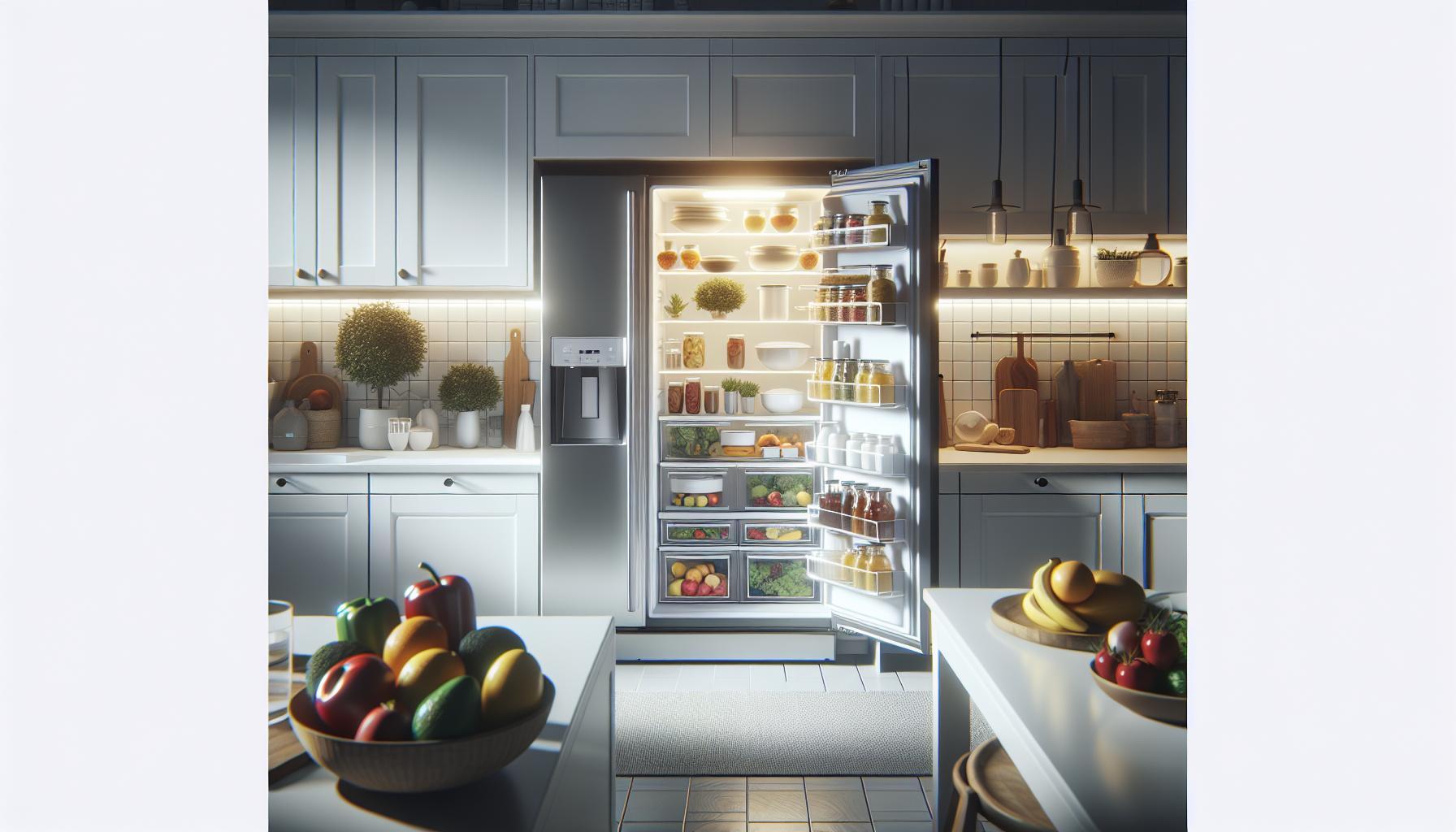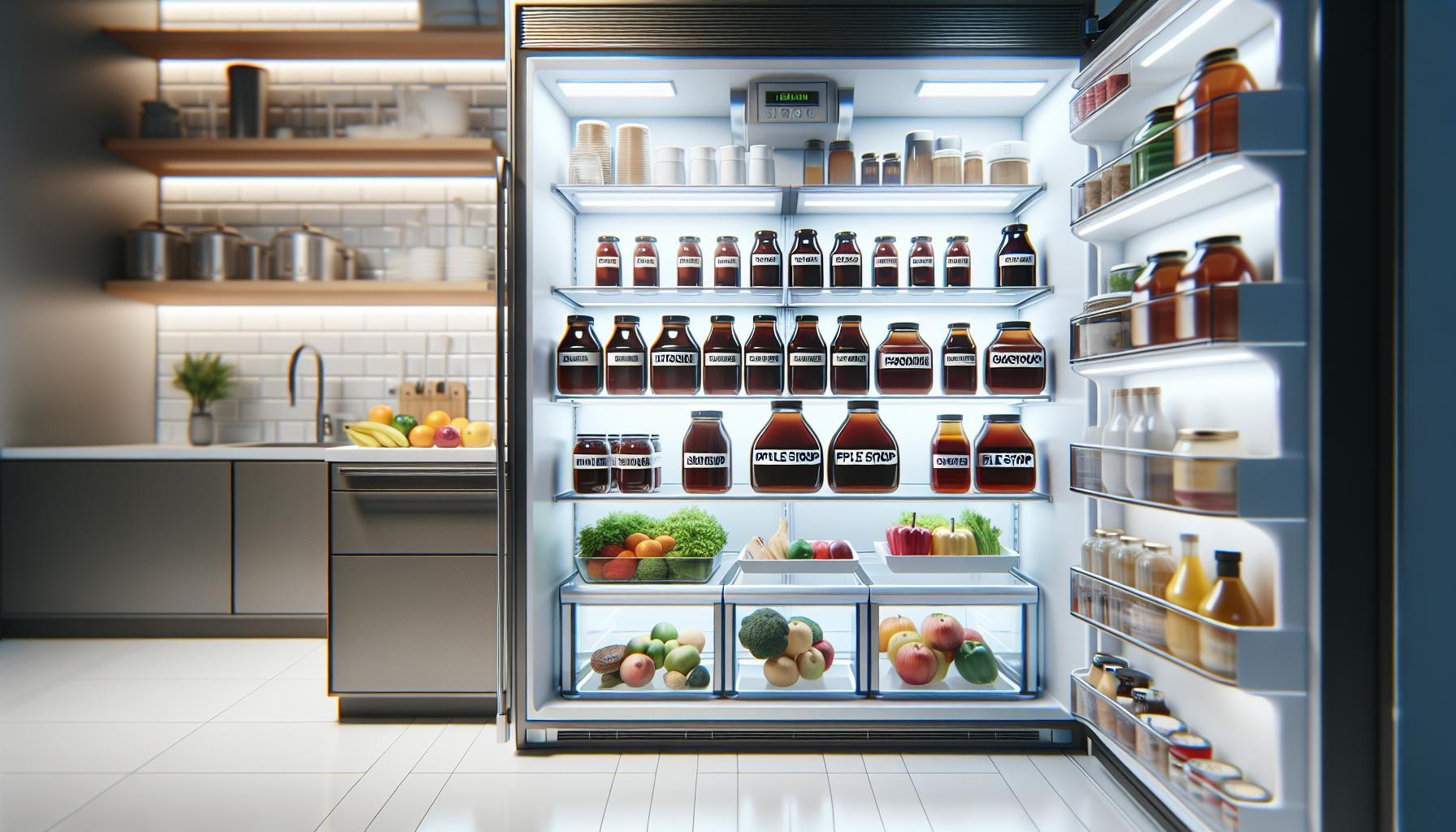Did you know that properly stored freeze-dried food can last anywhere from 20 years to indefinitely? Understanding the shelf life of freeze-dried foods is crucial for anyone looking to build a long-term food supply or simply ensure that their emergency provisions remain safe and nutritious.
In a world where food scarcity can be a real concern, having knowledge about the longevity of your provisions not only offers peace of mind but also enables you to make informed decisions when stocking up. Whether you’re an outdoor enthusiast who relies on portable meals during camping trips or someone preparing for unforeseen circumstances, knowing how to store and assess the shelf life of freeze-dried food is essential.
This guide will delve into the factors that influence how long freeze-dried foods truly last, practical tips for optimal storage, and straightforward methods to check for freshness. Arm yourself with this vital information, and learn how to make your freeze-dried food work for you for years to come.
How Long Does Freeze Dried Food Last?
Freeze-dried food has gained popularity for its convenience and longevity, making it an essential option for outdoor enthusiasts and emergency preparedness. Generally, freeze-dried foods can last anywhere from 25 to 30 years when stored under optimal conditions. This remarkable shelf life stems from the freeze-drying process, which removes moisture and inhibits the growth of microorganisms that can cause spoilage.
To maximize the longevity of freeze-dried foods, it’s crucial to store them in airtight containers, ideally in a cool, dark place. Exposure to light, heat, and humidity can degrade the quality of the food and shorten its shelf life. Vacuum-sealed packages are excellent for this purpose, as they minimize oxygen exposure, which is a significant factor in spoilage.
While the shelf life can be impressive, it’s important to note that some factors can influence it, such as the type of food, the formulation (including added preservatives), and how well the food is stored. For best practices, always check the packaging for specific expiration dates and guidance from manufacturers, as individual products can vary significantly in their longevity.
Understanding Freeze-Dried Food Shelf Life

The remarkable longevity of freeze-dried food is a testament to the sophisticated preservation techniques that remove moisture from food, significantly slowing down spoilage and nutrient degradation. Typically, when these products are stored correctly, they can last between 25 to 30 years. This extended shelf life makes them an ideal choice for preppers, campers, and anyone looking to maintain a stockpile of food that can withstand the test of time. Understanding how this process works and what factors come into play will help you maximize the potential shelf life of your freeze-dried items.
Several critical factors affect the shelf life of freeze-dried foods, one of which is the original moisture content of the food before processing. Foods with lower residual moisture will naturally last longer. Additionally, the packaging plays a pivotal role; vacuum-sealed and nitrogen-flushed materials minimize exposure to harmful elements like oxygen, light, and humidity, all of which can accelerate spoilage. For instance, commercially prepared meals often come in mylar pouches which are designed to provide an excellent barrier against these damaging factors.
Over time, even well-preserved freeze-dried foods can experience changes in color, flavor, and nutritional content, although they may still be safe to eat. It’s crucial to regularly check your supplies and adhere to suggested storage practices: keep them in a cool, dry place, ideally at temperatures between 60°F to 70°F. Staying vigilant about your food’s condition can prevent spoilage and ensure you have reliable nutrition at hand.
Maintaining an inventory system can also help-you may want to label packages with purchase dates, which will aid in rotation and consumption planning. Being informed about storage practices and knowing how to identify quality changes will ensure you get the best out of your freeze-dried foods.
Factors Affecting Shelf Life of Freeze-Dried Foods

The longevity of freeze-dried food is truly remarkable, but understanding the various factors that affect its shelf life can help you make the most of your stockpile. Different variables come into play, starting with the moisture content of the food before the freeze-drying process. Foods with lower initial moisture levels tend to retain quality and nutrients for a longer period. For instance, freeze-dried fruits typically have a different shelf life compared to freeze-dried meats due to their differing moisture contents.
Packaging is another critical factor influencing shelf life. Effective packaging not only protects the food from external elements but also preserves its integrity over time. Utilizing vacuum-sealed bags or nitrogen-flushed containers can significantly extend the shelf life of freeze-dried foods. These methods minimize exposure to oxygen, light, and humidity – all known to accelerate spoilage. For example, popular brands often package freeze-dried meals in mylar pouches, which are specially designed to block out moisture and light while providing a robust barrier against potential contaminants.
Storage conditions also play a vital role in maintaining the freshness of freeze-dried items. Ideally, these foods should be stored in a cool, dry environment, with temperatures ranging from 60°F to 70°F. Keep them away from areas with high temperature fluctuations, such as near ovens or direct sunlight. Frequent temperature changes can hasten spoilage, even in freeze-dried products. It’s wise to maintain an inventory system, labeling packages with purchase dates to manage and rotate your supplies effectively.
Recognizing the signs of spoilage is essential to ensuring food safety. While the majority of freeze-dried foods may remain edible past their expiration dates, they can still suffer from changes in taste, texture, and nutritional value. Regular checks on your food stocks will enable you to catch any issues early and take necessary actions, such as repackaging or consuming items approaching their limit. By being diligent about these factors, you can maximize the benefits of your freeze-dried food and ensure you have a reliable source of nutrition for years to come.
Comparing Freeze-Dried Food Shelf Life to Other Methods
When it comes to long-term food storage, freeze-dried foods stand out for their impressive shelf life, often outpacing other preservation methods. For instance, foods that are simply dehydrated may retain their quality for 1 to 3 years, whereas properly freeze-dried items can maintain nutrient integrity and flavor for 25 years or more. This amazing longevity is primarily due to the low moisture content in freeze-dried foods, which inhibits the growth of bacteria, molds, and yeasts-common perpetrators of food spoilage.
When comparing freeze-dried foods to canned goods, another popular preservation method, the differences in shelf life become apparent. Canned items usually last between 2 to 5 years if stored adequately, but their texture and flavor may degrade over time, particularly once opened. The sealed environment of canned foods, while advantageous, does not match the nutrient retention found in freeze-dried products. Additionally, once opened, canned foods require refrigeration and should be consumed within a week. In contrast, freeze-dried foods that remain sealed can be stored indefinitely with minimal loss in quality.
Moreover, the storage requirements also set freeze-dried food apart. While canned goods can endure fluctuating temperatures, freeze-dried items fare best in cool, stable environments. Keeping freeze-dried foods in a pantry away from sunlight and heat prolongs their usability, whereas fluctuating conditions can compromise other preservation methods.
In summary, freeze-dried foods not only boast superior shelf life compared to dehydrated and canned options but also maintain their taste, texture, and nutritional benefits longer. This makes them a reliable choice for emergency preparedness or simply for stocking up on your favorite meals. By understanding these differences, you can make informed decisions to ensure your pantry is well-stocked with food that will endure the test of time.
Optimal Storage Conditions for Freeze-Dried Foods
Storing freeze-dried foods properly is crucial to maximizing their impressive shelf life, which can last 25 years or more if handled correctly. To achieve this longevity, it’s essential to create an environment that minimizes exposure to moisture, heat, and light, all of which can degrade the quality of these items over time.
To establish optimal storage conditions, focus on three primary factors: temperature, humidity, and light exposure.
- Temperature: The ideal storage temperature for freeze-dried foods is between 50°F and 70°F (10°C to 21°C). Avoid areas with drastic temperature fluctuations, such as near ovens, stoves, or windows.
- Humidity: Since freeze-dried foods are extremely low in moisture, it’s critical to keep them in a dry environment. A relative humidity of less than 15% is ideal. In humid climates, consider using desiccants or vacuum-sealed bags to further protect your food.
- Light: Store freeze-dried items in opaque containers or in a dark location to prevent light exposure, which can accelerate nutrient degradation. A pantry, cellar, or dark cupboard is often perfect.
Proper containers also play a significant role in extending the shelf life of freeze-dried foods. Using vacuum-sealed bags or airtight containers guarantees minimal oxygen exposure, which is essential because oxygen can oxidize the food and lead to spoilage. If you’re using mylar bags, it’s advisable to include oxygen absorbers to ensure the best protection against air.
By creating an environment that limits light, moisture, and air exposure, you can confidently store your freeze-dried food for decades, knowing it retains its nutritional value and flavor. Regularly inspecting your storage area for signs of contamination or damage is also a good practice to maintain quality over time.
Signs of Spoilage in Freeze-Dried Foods
It’s vital to recognize the to ensure your safety and the quality of your meals. While these foods are known for their impressive shelf life, improper storage or extended periods of time can lead to changes that are not safe for consumption. Understanding how to identify spoilage can help you make informed decisions and avoid potential health risks.
One of the most telltale is a significant change in color. For instance, if fruits or vegetables appear to be darker or have a faded look compared to when they were first packaged, this might indicate deterioration. Additionally, a distinct off-smell can signal spoilage-if the product has a rancid or unpleasant odor, it’s best to err on the side of caution and discard it.
Another key indicator is texture. Freeze-dried foods should maintain a crisp and lightweight feel. If you notice any signs of moisture or clumping, this may suggest that the food has been exposed to humidity and could be at risk of spoilage. Furthermore, checking the packaging for any signs of punctures or seals that may have failed is crucial, as these compromises can expose the food to air and moisture, enhancing the likelihood of spoilage.
To ensure your freeze-dried foods remain safe for consumption, regularly inspect your storage area and adhere to proper storage practices. If in doubt, conduct a smell and visual check before rehydrating or consuming. Taking proactive steps will help you enjoy your freeze-dried meals to their fullest potential without compromising on safety.
Extending the Shelf Life of Freeze-Dried Items
To maximize the longevity of freeze-dried foods and ensure they remain safe and tasty for as long as possible, consider implementing several best practices in your storage and handling routines. Proper preservation begins before purchase and continues through to consumption. Selecting high-quality products with long shelf lives is just the first step; how you store and handle them is equally critical.
One of the primary factors in extending shelf life is optimal storage conditions. Always keep freeze-dried foods in a cool, dark, and dry environment. A temperature-controlled pantry or food storage room is ideal; aim for a temperature below 70°F. Avoid direct sunlight and fluctuating humidity levels, as moisture can damage the products, compromise their texture, and lead to spoilage. For extra protection, store items in airtight containers or vacuum-sealed bags, which help minimize air exposure.
Additionally, be vigilant about keeping the original packaging intact until ready to use. Many brands utilize moisture-proof and light-blocking materials that help maintain freshness. If you transfer freeze-dried foods to new containers, ensure they are thoroughly cleaned and completely dry before use. For even longer preservation, consider using oxygen absorbers within your storage containers. These small packets actively reduce the presence of oxygen, one of the main culprits in deteriorating food quality.
Regularly checking your stored items for signs of degradation is also crucial. Rotate stock based on a first-in, first-out (FIFO) method: use older packages before newer ones to ensure none go to waste. Developing a system to mark containers with the date of purchase can help in managing rotation efficiently. Following these strategies not only prolongs the shelf life of freeze-dried foods but also enhances the reliability and enjoyment of your meals over time.
Using Freeze-Dried Foods After Expiration Dates
Using freeze-dried foods beyond their expiration dates can be a daunting decision for many, but it’s essential to understand that the date found on packaging is not a definitive indicator of safety. In fact, freeze-dried foods, when stored properly, can retain their quality for a significant time beyond those dates. It’s not unusual for some products to last 5 to 30 years if they have been kept in ideal conditions-cool, dry, and dark environments are vital for maintaining freshness.
Before using freeze-dried foods past their expiration dates, conduct a careful evaluation. Start by inspecting the packaging for any visible damage, tears, or signs of moisture. Next, observe the color and texture of the food inside. If everything appears intact and unchanged, the food is likely safe to consume. Always trust your senses; if the food smells off or has an unusual texture, it is better to err on the side of caution and discard it.
Rehydrating Older Freeze-Dried Foods
If the food appears safe, it can be rehydrated and consumed. When rehydrating freeze-dried foods, remember that older products might take slightly longer to regain moisture and texture. Here’s a simple best practice for rehydration:
- Measure the correct water-to-food ratio, typically 1:2 or as per package recommendations.
- Soak the food in warm water for approximately 15-30 minutes, adjusting time based on the food type.
- Once rehydrated, inspect the food to ensure it has returned to a pleasant texture.
Storing After Expiration
Once you’ve used freeze-dried foods past their expiration date, consider how leftover food impacts future meals. If the texture isn’t up to your standard, incorporating them into soups or casseroles can refresh their flavor and palatability while ensuring nothing goes to waste.
Ultimately, while enjoying freeze-dried foods past their expiration dates is generally safe if handled properly, always prioritize your health and safety by conducting thorough checks before consumption. Keeping an eye on the overall integrity of your food can help extend its life even further, making it a valuable part of your emergency preparedness or long-term food storage strategy.
Nutritional Value Over Time: What to Expect
While freeze-dried foods are celebrated for their long shelf life, understanding how their nutritional value changes over time is crucial for making informed choices about their use. Most freeze-dried foods retain a significant portion of their vitamins and minerals during the freeze-drying process; however, gradual nutrient degradation can occur, especially with prolonged storage. Certain vitamins, such as vitamin C and some B vitamins, are more susceptible to loss when exposed to light, heat, or air, which can happen during extended storage periods.
To maximize nutritional retention, store freeze-dried items in a cool, dark, and dry environment. Ideally, foods should be kept in airtight containers or vacuum-sealed bags, limiting their exposure to air and moisture. When freeze-dried foods are maintained properly, they can retain about 90% of their nutritional value for 5 to 15 years. Beyond this period, although they may still be safe to eat, you might notice a decrease in nutritional potency.
Evaluating Nutritional Value Post-Expiration
When considering using freeze-dried foods that have surpassed their best-by dates, it’s important to evaluate their visible quality and understand that certain nutrients might decline. Conduct a thorough visual and sensory assessment: if the food appears normal and smells acceptable, it is likely safe. However, while the food may be useable, be aware that vitamin content, particularly for sensitive nutrients like vitamins A and C, may be diminished.
Here’s a quick guide on nutrient degradation over time:
| Nutrient | Percentage Retained After 5 Years | Percentage Retained After 10 Years |
|---|---|---|
| Vitamin C | 50% | 30% |
| Vitamin A | 80% | 60% |
| B Vitamins | 60% | 40% |
| Minerals (General) | 90%+ | 90%+ |
Ultimately, while freeze-dried foods maintain remarkable longevity, it is prudent to be mindful of nutrient changes over time. Integrating them into meals promptly, particularly before major expiration milestones, ensures you benefit from their optimal nutritional value. For those planning for emergencies, a well-structured rotation plan, consuming older stock while replenishing supplies, can help you maintain the best quality and nutritional integrity in your food storage strategy.
Common Myths About Freeze-Dried Food Longevity
Despite their long shelf life, many myths surround freeze-dried foods that can lead to misconceptions about storage and usage. One common belief is that freeze-dried foods do not spoil, but this is not entirely true. While they can remain safe to eat for 10 to 25 years when properly stored, factors like moisture exposure and improper sealing can lead to spoilage. Thus, good storage practices are essential to keep these foods edible for as long as possible.
Another frequent myth is that freeze-dried food retains all of its nutritional value indefinitely. In reality, while it can maintain up to 90% of its nutrients for several years, sensitive vitamins like vitamin C and some B vitamins degrade over time. Studies indicate that after five years, vitamin C retention drops to 50% and continues to decline, with only 30% left after ten years. Understanding this can guide consumers to use these foods while they are still at their peak nutritional value.
Moreover, some people mistakenly believe that freeze-dried foods can be consumed immediately and without any preparation. While they are lightweight and convenient, they still require rehydration to restore texture and flavor. Storing these items in airtight containers and keeping them out of light and heat significantly aids in preserving their quality.
Educating oneself on these myths ensures that you can maximize the benefits of freeze-dried foods, making them a reliable option for both everyday meals and emergency preparedness. Always prioritize checking for any signs of spoilage or off odors and be mindful of expiration dates, as these precautions can help you maintain a safe and nutritious food supply.
Best Practices for Rehydrating Freeze-Dried Foods
To ensure your freeze-dried meals are as tasty and nourishing as possible when it’s time to rehydrate them, following best practices is crucial. Many assume that rehydrating these foods is a straightforward process, but understanding the nuances can significantly enhance the flavor and texture of your meals. Here’s a guide to making the most of your freeze-dried food.
Start with hot or boiling water for optimal rehydration. While cold water can effectively rehydrate freeze-dried foods, it generally takes longer and may not yield the desired result in terms of texture and flavor. For most freeze-dried meals, boiling water is recommended. An ideal ratio is about 1 cup of water for every 1 cup of freeze-dried food. This measurement can vary based on the specific food item and your personal texture preference.
Rehydration Process
Follow these steps to achieve the best results:
- Measure: Use a cup or scale to portion your freeze-dried food accurately.
- Boil Water: Start by bringing water to a boil. You can use a kettle, saucepan, or even a microwave.
- Combine: Pour the boiling water directly over the freeze-dried food in a heatproof container.
- Cover: Tightly cover the container with a lid or plastic wrap to trap the steam, which aids in the rehydration process.
- Wait: Let the food sit for about 5-15 minutes, depending on the type of food. Check periodically until you’ve achieved the desired texture.
- Fluff and Stir: Once rehydrated, fluff and stir the food to ensure even hydration.
For optimal outcomes, it’s essential to note that some items, such as meats or pasta, may require longer soak times compared to fruits or vegetables. Always refer to the manufacturer’s recommendations or guidelines if available.
Enhancing Flavor
To further enhance the flavor of your rehydrated meals, you can consider adding spices, herbs, or even bouillon to the water before rehydration. Experimenting with different combinations can yield delicious results.
Additionally, if you’re in a hurry, consider partial rehydration. You can initially soak the food, then cook it with other ingredients to finish the process, blending flavors even more.
By adhering to these practices, you can ensure that your freeze-dried meals are not only safe to eat but also flavorful and satisfying, making them a valuable addition to your pantry for everyday meals or emergencies.
Emergency Preparedness: The Role of Freeze-Dried Foods
In times of uncertainty, having reliable food sources is essential, and freeze-dried foods provide an excellent solution for emergency preparedness. With a shelf life typically ranging from 10 to 30 years, depending on the type of food and storage conditions, they can be a game-changer for those looking to build a resilient pantry. Their lightweight nature also makes them easy to store and transport, allowing you to prepare for a variety of situations, from natural disasters to long-term travel.
When incorporating freeze-dried foods into your emergency supplies, proper storage is key. Ensure that these foods are kept in a cool, dry place away from direct sunlight. Sealed containers or vacuum-sealed packaging can further extend their shelf life by protecting them from moisture and air exposure. Regularly check your supplies and incorporate a system to rotate your stock-using the FIFO (first in, first out) method ensures you consume older items before they reach their expiration dates.
It’s also advisable to diversify your freeze-dried food options. Include various food groups like fruits, vegetables, grains, and proteins to ensure balanced nutrition during emergencies. For instance, freeze-dried meats can provide much-needed protein, while fruits and vegetables contribute vitamins and minerals. By planning meals that incorporate these ingredients, you can maximize the nutritional value while ensuring variety, even in challenging circumstances.
Lastly, familiarize yourself with rehydration methods in advance. Knowing how to properly rehydrate freeze-dried foods will save time and reduce stress when you need them most. Keep a guide near your food storage that outlines the best practices for rehydration, including recommended water ratios and soaking times based on the type of food. By being proactive in these areas, you can ensure that your freeze-dried foods play a crucial role in maintaining your health and well-being during emergencies.
FAQ
Q: How do I know if freeze-dried food has gone bad?
A: Signs of spoilage in freeze-dried foods include an off smell, changes in color, loss of flavor, or moisture presence. If the packaging is damaged or inflated, it’s best to discard the food. Regularly check for these indicators to ensure safety and quality.
Q: Can freeze-dried food be stored indefinitely?
A: While freeze-dried foods have a long shelf life, they are not indefinitely stable without proper storage conditions. Ensure they are kept in a cool, dry place, away from light, to maximize their lifespan. Even when stored correctly, it’s recommended to consume them within 25 to 30 years.
Q: What is the optimal storage temperature for freeze-dried food?
A: The ideal storage temperature for freeze-dried food is below 70°F (21°C). Keeping it in a cool, dry environment enhances its shelf life and retains nutritional value. Avoid fluctuations in temperature, which can compromise quality over time.
Q: How can I extend the shelf life of freeze-dried food?
A: To extend the shelf life, store freeze-dried foods in vacuum-sealed bags or airtight containers with oxygen absorbers. Keeping them in a cool, dark place also slows down degradation and keeps them safe for longer periods.
Q: Are there any nutritional losses in freeze-dried food over time?
A: Freeze-dried foods typically maintain most of their nutritional value for years. However, some vitamins may degrade slowly over time, especially if not stored properly. Regularly check the quality for the best nutritional benefits, particularly if consuming beyond the recommended shelf life.
Q: Can I freeze freeze-dried food to make it last longer?
A: Freezing freeze-dried food is not recommended, as it can introduce moisture and affect texture and flavor. Instead, focus on proper storage methods to prolong shelf life effectively.
Q: What is the rehydration process for freeze-dried foods?
A: To rehydrate freeze-dried foods, simply add hot water and let them sit for 5-15 minutes, depending on the food type. Keep the container sealed during this period to retain heat. Comprehensive rehydration guidelines can enhance the meal experience.
Q: How can I tell if freeze-dried food is safe to eat after the expiration date?
A: While freeze-dried foods may still be safe after the expiration date if stored properly, always check for signs of spoilage before consuming. If there are no changes in smell, appearance, or texture, they may still be safe, but use your best judgment.
These FAQs provide essential insights into the longevity and safety of freeze-dried foods, guiding readers to inform themselves better and practice optimal food storage. For further comprehensive details, refer to sections about shelf life and storage conditions in the main article.
Wrapping Up
In summary, understanding how long freeze-dried food lasts is essential for maximizing its value and ensuring your safety. Remember, proper storage can extend shelf life significantly, so be sure to keep your freeze-dried items in a cool, dry place and check them regularly. If you still have questions or want to utilize freeze-dried foods optimally, explore our articles on food storage tips and the best practices for emergency preparedness.
Don’t miss out on our free newsletter for regular updates on food safety along with exclusive tips that can help you make informed choices. Feel free to leave your thoughts and experiences in the comments below-your feedback is invaluable! For further insights, check out our comprehensive guide on the nutritional benefits of freeze-dried food-your next step in maximizing your food supply. Engage with us and discover more valuable content tailored just for you!





